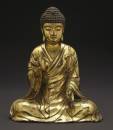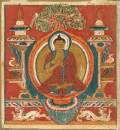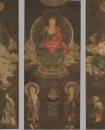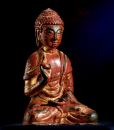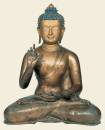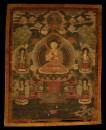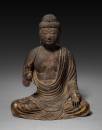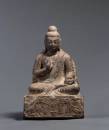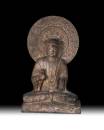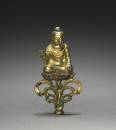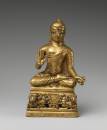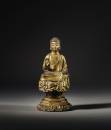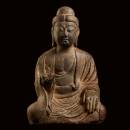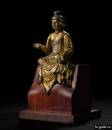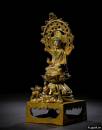侧边栏
这是本文档旧的修订版!
说法像(Meditation Pose)
说法像,也叫初转法轮像,表现释迦牟尼45岁时在波罗奈城的鹿野苑正式传教的形象,佛经上称此次讲法为“初转法轮”。
外文描述
The <color #ed1c24>Dhyana mudra (meditation mudra, 禅定印)</color> is used in representations of the Sakyamuni Buddha and Amitabha Buddha. Sometimes the Dhyana mudra is used in certain representations of Bhaisajyaguru as the Medicine Buddha, with a medicine bowl placed on the hands. It originated in India most likely in the Gandhara and in China during the Wei period (禅定印最可能起源于印度的犍陀罗时期和中国的北魏时期). The Dhyana mudra is also known as Samadhi or Yoga mudra. It shows both hands resting in the lap. The back of the right hand is leaning on the palm of the left hand. Often the thumbs are touching each other, forming the mystic triangle. This is the meditation mudra, which symbolises wisdom. The Buddha used this gesture during his final meditation under the Bodhi tree when he attained enlightenment.
相关页面
造像特征
螺发佛装,结跏趺坐,左右手两叠置于腹前结禅定印,右掌压左掌,掌心朝上, 两拇指的指端相接。
深度阅读: ……
参考文献:
……


